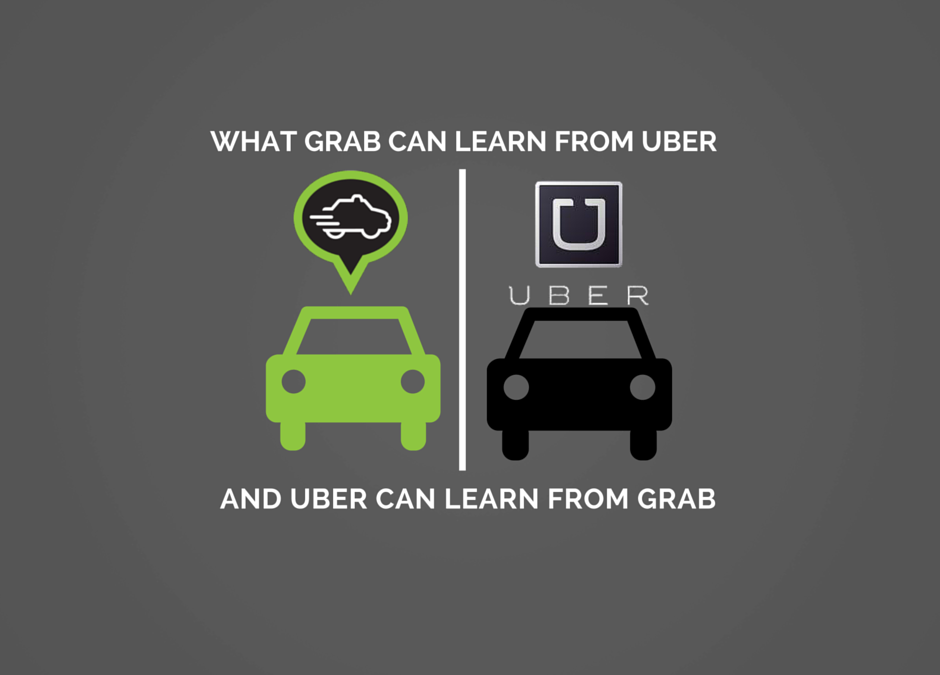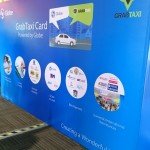We appreciate how the ridesharing apps (i.e. GrabCar and Uber) have transformed how we commute as riders and earn our living as drivers. Although they both aim to provide the same values of ridesharing, they are fundamentally different in terms of business rules and processes which translate to very different user experiences.
As much as we do not mean to pit them against each other (who cares? They’re competitors anyway. haha!), we, as riders and drivers for both platforms, can’t help but notice the kicks and kinks of both systems. This post is not to compare them, as both have different value propositions and targets different demographics at the moment. Instead of ranting about how one sucks more than the other, we’ll give sincere feedback that we hope both companies can take in and consider.
Coming from both the rider’s and driver’s perspective of these Transport Network Company (TNC), here’s what we think Grab can learn from Uber and Uber can learn from Grab.
What Grab can learn from Uber:
Rider Experience
To be honest, we have very limited experience as riders of GrabCar. For the reason that…we can’t book a ride!
We’ve heard these stories over and over again. You’re trying to book a ride with GrabCar but no one is accepting your request. You try to offer a tip and with every attempt, you become increasingly generous. Sometimes to the point of offering a tip of Php 500 (which is twice as much on top of your actual fare!) but still to no avail.
Is this because the drivers are too picky and choosy since they can see the rider’s destination? Is this because the taxi-driver “culture” is carried on? OR is this because the bidding system of the app fails?
We won’t know, but we hope Grab fixes this because Uber is winning in terms of rider experience. In Uber, drivers pick up the riders regardless how far the pickup point is; and more importantly, regardless of their destination! Drivers are courteous and generous. Rating system keeps both riders and drivers in check. Not to mention the cheaper rates of Uber (if there’s no surge).
Also, we understand that only about 5% of the population has credit cards, but we have to admit, the cashless payment of Uber gives so much convenience. You always know you’re paying exact, no need to think about having enough cash when you ride. You literally just request and ride. We hope Grab will soon launch this feature (they promised last May, but up til now, na-da!).
Streamlined Driver/Partner Processes
Considering that Uber has been in existence since 2008, it is understandable that their system and algorithm is more sophisticated and mature.
When we say “streamlined process”, this has more to do with the driver experience once you become a GrabPeer or GrabDriver.
Let’s tackle first how drivers accept trip requests. GrabCar uses the same bidding system that GrabTaxi uses—all the drivers within a certain radius receive the requests. The drivers then bid for these trips. Among those who bid, the trip will be awarded to the driver nearest to the pick-up point. This is drastically different from the driver experience in Uber.
In Uber, once the device sounds off, you’re sure that the trip request is yours. The system already calculates who the nearest driver is and automatically assigns the rider to the nearest driver. So once a driver accepts the trip, they’re assured that the passenger is waiting for them. No more guesswork, no more wondering when you’ll get an accepted trip after bidding over and over again.
Now, let’s talk about the partner dashboard where you can monitor the trips taken by the drivers, edit your partner account settings, add vehicles, add drivers, etc. In Uber , this partner dashboard is very well established, providing the partner/operator the capability to confidently manage the business at his convenience.
Unfortunately, in Grab, it’s not that straightforward. There’s a peer dashboard called “Gamma”—judging from how they call it, it’s probably under development and testing. And this is not automatically available to anyone. You have to request for it and ideally, you need a fleet (minimum of 2 cars) for them to give you access. If you only have one car with Grab and has Gamma access, we would love to hear your experience in the comments. It’s understandable that it isn’t performing yet as seamlessly, given that Uber has a head start of a good 5-6 years of development and refinement.
This is how we understood it based on the driver seminar and our month-worth of limited practical experience of driving with GrabCar.
What Uber can learn from Grab:
Now let’s look at how the behemoth that is Uber can learn from Grab. We know Uber wins, without contention, in terms of overall rider experience but Grab is more “driver/operator-centric” (up to some extent).
Peer/ Driver Onboarding Experience
GrabCar nails Driver Onboarding Experience. This is in so far as their onboarding events go. Just look at the pictures below.
Their Peer Info Sessions and Driver Onboarding Seminars are also being hold by a trainer in Tagalog so peers and drivers can easily comprehend and questions are answered better. The whole experience seems more “approachable” than that of Uber’s.
Localized Implementation
Aside from Tagalog-based seminars, there are also some points where the “localized” implementation strategy of Grab works very well for the local Philippine audience.
Customer support hotline. In the Philippines, Filipinos are still more comfortable and feels more secured if they are talking with a person. They prefer calls to discuss problems rather than cold and aloof emails. Yes, we understand email support is efficient on the part of Uber but this does not sit right with the perception (and emotions) of Filipino drivers and operators. Most of them are very new to technology, using gadgets, cashless payments, what more pure email communications?
In this blog alone, we get a lot of inquiries asking for Uber’s contact number.
Driver Clearance. In Uber, if a driver wants to be transferred to another Partner account, the driver can just go to Uber’s HQ or send an email request for a transfer without the previous partner even knowing about it. In Grab, if you’re a driver wanting to transfer, you need to get clearance from your previous partner (probably because the cash is with the drivers). And you need to wait for at least a month to be activated back into the system.
Cash/Prepaid/Debit card acceptance. We understand the convenience of being totally cashless. However, as we mentioned earlier, only a meager 5% of the Philippine population has credit cards; hence, our post about the workaround on how to use prepaid/debit card for Uber. It would be good if the payment options can be opened freely to include debit and prepaid cards (and cash) or a mobile wallet so that more riders can experience Uber. This would then translate to bigger market reach for Uber. They’ve done it in India and Malaysia, we hope they do it soon in Philippines.
Conclusion
It’s no question how both Grab and Uber have provide good service to the commuting public through a disruptive transport alternative. We understand there’s no “perfect” system or business model but there could be one that is most adaptable to market—which you need to succeed. So it remains to be a race to market dominance, and the Philippine market is so ripe for the taking.















